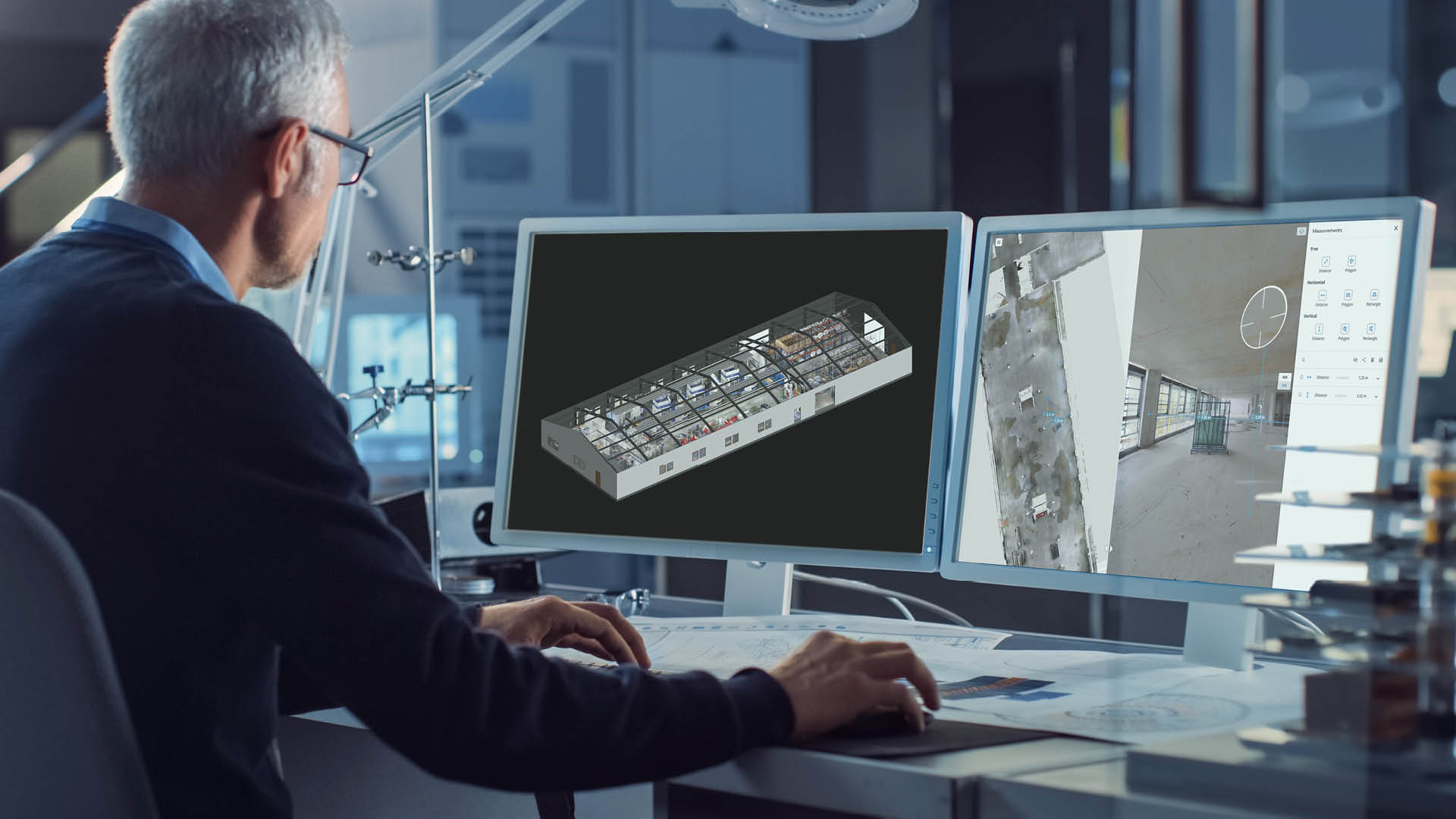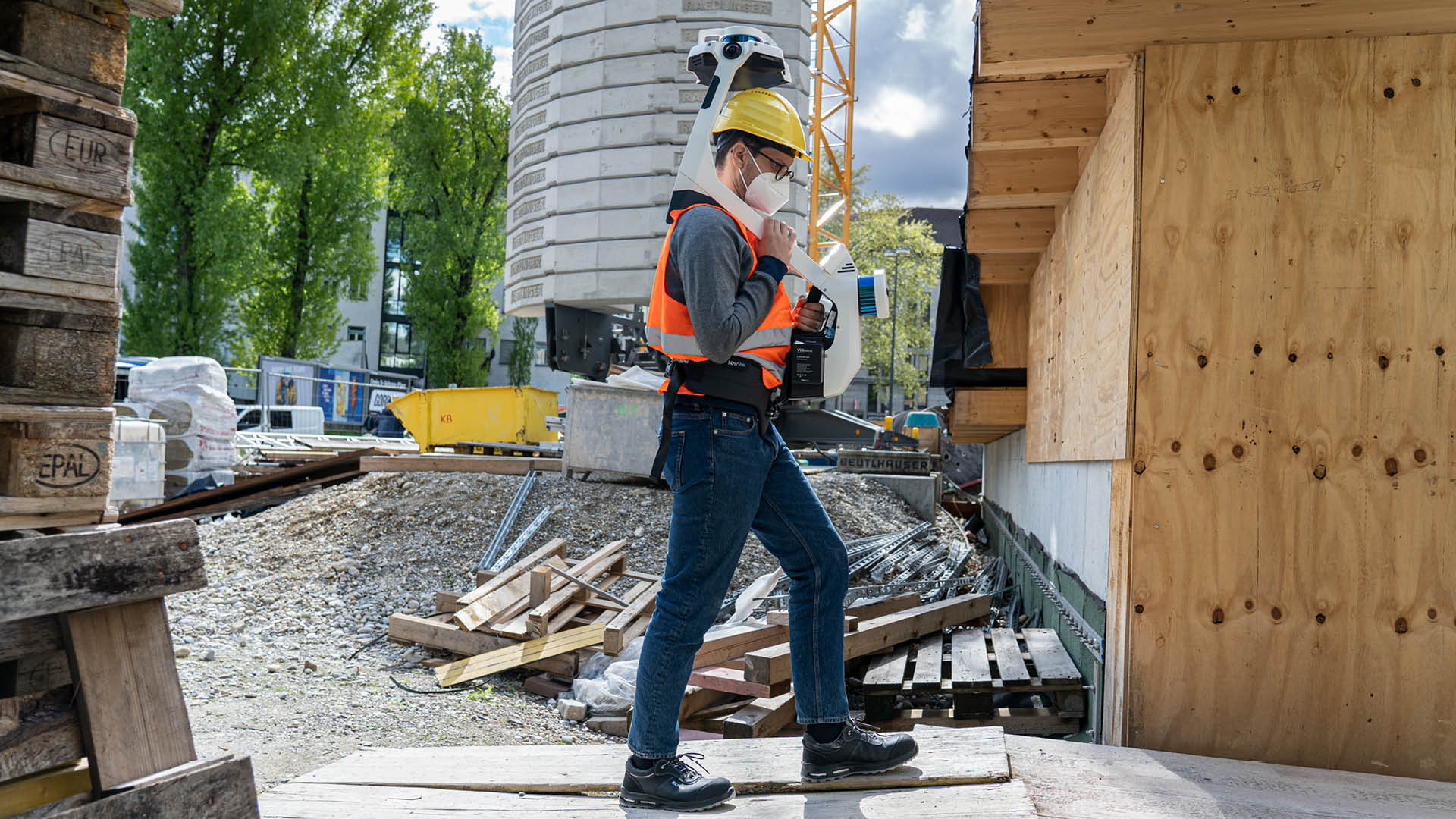How powerful is building information modeling? Let's explore a number of high-value applications for BIM, from design all the way through to demolition.
The value of building information modeling (BIM) is immense. As we have covered in a scan-to-BIM overview and glossary, a BIM model represents the physical elements of a building and connects them to important attribute information – and this makes it a powerful shared-knowledge and collaboration resource throughout the building lifecycle.
Today, we want to demonstrate just how powerful building information modeling can be. We’ll do this by exploring a number of high-value applications for BIM, from the design of the building all the way through the final demolition.
Let’s break it down step by step.

Design and Planning
The first part of a building’s lifecycle encompasses the design of the building, and then the development of a plan for construction. A good BIM can shine in this stage by enabling trades to work together in a common data environment and optimize building plans before construction begins.
BIM coordination and clash detection
These two terms are sometimes used interchangeably. They refer to the use of a BIM model to coordinate work between the MEP engineering, structural engineering, and architectural design teams during the design process.
To perform coordination, a team brings the different individual models – prefab, landscape, electrical, etc – into a federated model. This gives the team a holistic view of the building design elements that can highlight clashes, like a run of pipe that “breaks” through the floor. By using this model to look for these problems in advance, a team can fix them with a quick redesign rather than reacting in the field.
Scheduling
As you know, a BIM model includes a combination of spatial and attribute data. But it can also include scheduling data. A specific building element might include data to indicate when it will be constructed, how long it would need to dry or cure after installation, where it sits in a complex construction sequence, and so on.
This adds the dimension of time to the three spatial dimensions, which is why this process is often called 4D BIM. It can be used to create visualizations that show how the project will look at any stage in the building process. It can also be used to simulate different designs and see how they fit in the context of the project.
A 4D model’s primary use is the coordination of work or ensuring that construction will proceed in a logical and efficient way.
Cost analysis
A team can also add cost information in the form of labor estimates, material prices, and so on. This creates a 5D BIM model, which offers another level of context for planning and optimizing the construction process.
Construction
A BIM model aids in the construction stage by making a wealth of information available (and easily understandable) to all stakeholders. It can be used for a variety of applications, from new construction to renovation work.
Information management
Design teams can collect important files in a common data environment and add as much metadata to the BIM model as needed. This ensures that information is always easy to find, and easy to consult for workers in the field – bridging the gap between the design and construction process. It also reduces the complex challenges of file control, which in turn speeds up the QA/QC process.
Field consultation
A BIM model can also ensure that all members of the project team have the latest data. By using a rugged tablet in the field, a worker can consult the model before performing work—rather than looking to an outdated 2D plan that was printed off a week earlier. In the future, this task may even be performed using AR headsets.
Prefabrication
A project team can use the BIM model as a reference for prefabricating elements, which entails building them offsite at a lower price. The model gives the project team all the spatial and scheduling information they need to prefab elements that don’t clash with existing elements.
Project team communication
A BIM model offers a common data environment, and a single source of truth, that includes all information about the construction project. This makes it ideal for communication on site. For instance, a project team could use it as a reference during weekly meetings to ensure that everyone is on the same page. This helps a project make decisions faster, prevent expensive mistakes, and minimize rework.
Public and client communication
Because a BIM model includes a holistic, easy-to-understand picture of all the elements of a construction job, they can be powerful tools for communication with outside stakeholders.
For instance, a project team could create animations that demonstrate project progress at different stages. They could include traffic closures and other important public information, or a variety of other information as needed.
This gives the public or the client an easy way to understand a complex project—without needing to read complex flow charts or look at detailed, confusing spreadsheets. For extra impact, a project team could load select parts of the model into a VR presentation for interactive exploration.

Operations and Maintenance
It may be a surprise, but the operations and maintenance phase of a building lifecycle is the most expensive by far. Some estimates put 70% of the building’s total costs during this phase. A good, up-to-date and precise BIM model can go a long way toward reducing these costs.
Facilities management
A BIM model can have a lot of value in FM. The model includes valuable and useful information about a variety of building elements and systems. A maintenance worker or owner-operator could use it to find information about the location of specific machines, the number of doors on a specific floor, which kind of lightbulb a lamp uses, positioning of windows, and so on.
By keeping the model up to date, a facilities team can ensure that they have a reference for applications ranging from space planning, reduction of energy costs, and planning of routine maintenance.
Digital twin generation
A BIM model can also offer the basis for generating a digital twin, or an intelligent model that includes real-time operational information for the asset. Owner operators can install smart sensors and IoT devices in the asset, and connect them to the model. This enables them to track data related to building usage, movement of occupants, temperature, and so on.
A digital twin has too many applications to cover here. But to give you an idea of their power, an owner operator could use a digital twin to plan building improvements and then simulate their effect on a variety of building parameters, like energy usage or foot traffic. Or, they could use this data to predict maintenance needs and plan their budget and labor accordingly.
Demolition
You might not think that a BIM model would be useful when tearing a building down, but you’d be wrong.
Intelligent demolition
These models offer all the information a team needs to optimize demolition much as they would the construction process. They can use the model to quantify the surface area and volume of different materials, and then ensure their recovery by planning the demolition process accordingly.
No BIM? No Problem
As you can see, a BIM model is extremely useful throughout the whole building lifecycle. The big problem is that BIM is a relatively recent arrival compared to many of the buildings worldwide. That means a massive majority of our assets do not come with a pre-existing model. (Some buildings do come with 2D or 3D plans, but these models are often out of date, and don’t correctly reflect the as-built state of the building.)
The good news is that a scan-to-BIM workflow performed by a trained professional can generate the accurate, precise point clouds a project needs to generate a BIM model. This model, in turn, can be used to plan renovations, create digital operational twins, or perform any of the applications we laid out above.
If a BIM model is the key to getting the most of a building, then scan-to-BIM is the key to generating a quality model for existing assets.
Sean Higgins is an independent technology writer, former trade publication editor, and outdoors enthusiast. He believes that clear, buzzword-free writing about 3D technologies is a public service.


